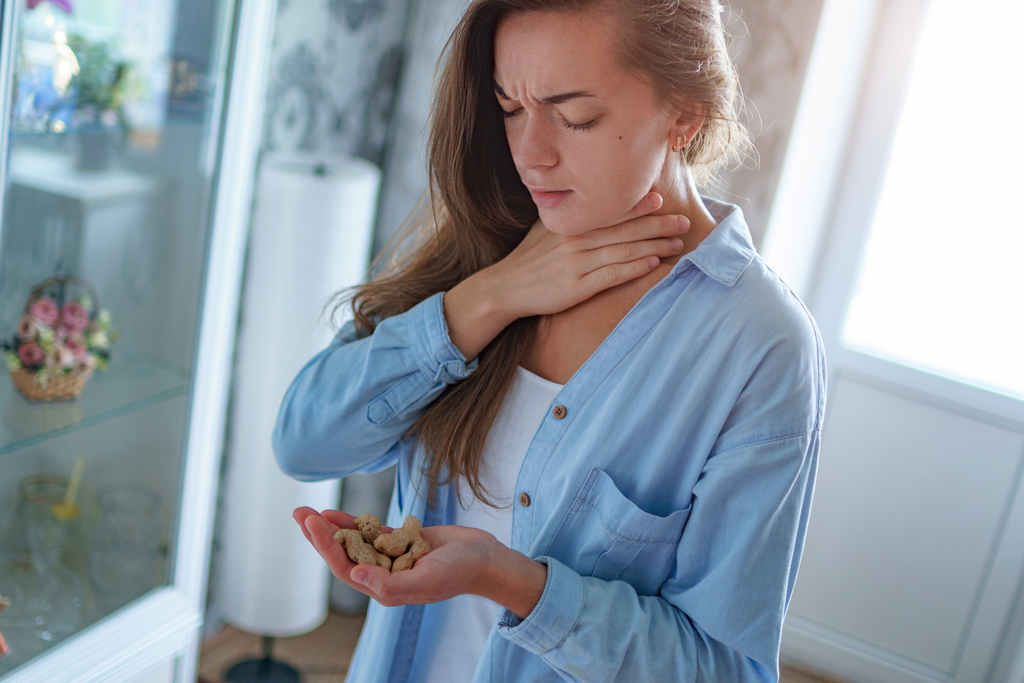Symptoms of food allergies typically appear from within a few minutes to 2 hours after a person has eaten the food to which he or she is allergic. Following ingestion of a food allergen(s), a person with food allergies can experience a severe, life-threatening allergic reaction called anaphylaxis. This can lead to:
- constricted airways in the lungs
- severe lowering of blood pressure and shock (“anaphylactic shock”)
- suffocation by swelling of the throat
 Media Credit: Shutterstock
Media Credit: Shutterstock Each year in the U.S., it is estimated that anaphylaxis to food results in:
- 30,000 emergency room visits
- 2,000 hospitalizations
- 150 deaths
Prompt administration of epinephrine by autoinjector (e.g., Epi-pen) during early symptoms of anaphylaxis may help prevent these serious consequences.
- Learn the best practices for serving a food allergic customer including: the role of management, how to properly prepare an allergen safe meal, and the front of the house and back of the house responsibilities.
- Reg Price: $15.00
- Enter Code "train10off" at Checkout
Symptoms of a Food Allergy
Symptoms of food allergies typically appear from within a few minutes to 2 hours after a person has eaten the food to which he or she is allergic. Allergic reactions can include:
- Hives
- Flushed skin or rash
- Tingling or itchy sensation in the mouth
- Face, tongue, or lip swelling
- Vomiting and/or diarrhea
- Abdominal cramps
- Coughing or wheezing
- Dizziness and/or lightheadedness
- Swelling of the throat and vocal cords
- Difficulty breathing
- Loss of consciousness
Mild Symptoms Can Become More Severe
Initially mild symptoms that occur after ingesting a food allergen are not always a measure of mild severity. In fact, if not treated promptly, these symptoms can become more serious in a very short amount of time, and could lead to anaphylaxis.
About Other Allergens
Persons may still be allergic to — and have serious reactions to — foods other than the eight foods identified by the law. So, always be sure to read the food label’s ingredient list carefully to avoid the food allergens in question.
What to Do If Symptoms Occur
The appearance of symptoms after eating food may be a sign of a food allergy. The food(s) that caused these symptoms should be avoided, and the affected person, should contact a doctor or health care provider for appropriate testing and evaluation.
- Persons found to have a food allergy should be taught to read labels and avoid the offending foods. They should also be taught, in case of accidental ingestion, to recognize the early symptoms of an allergic reaction, and be properly educated on — and armed with — appropriate treatment measures.
- Persons with a known food allergy who begin experiencing symptoms while, or after, eating a food should initiate treatment immediately, and go to a nearby emergency room if symptoms progress.